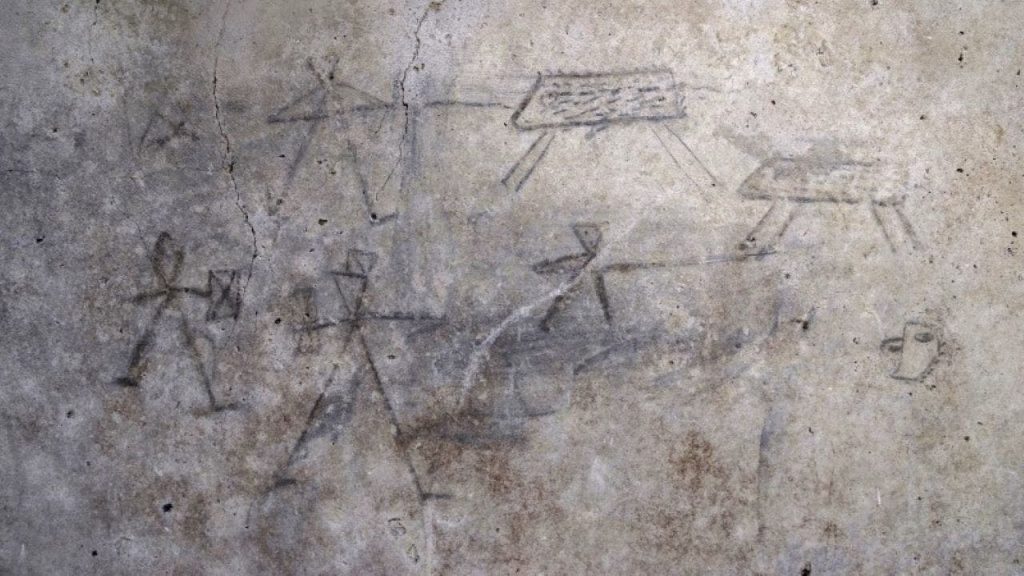Archaeologists in Italy recently uncovered “violent” cartoons drawn by children in ancient Rome, roughly 2,000 years old. The discovery was announced by the Archaeological Park of Pompeii on May 28. The doodles were found on a wall along Via dell’Abbondanza, the main street of Pompeii, an ancient Roman city buried by volcanic ash during the eruption of Mount Vesuvius in 79 AD. The charcoal drawings depict gladiators and hunters, reflecting the violence children were exposed to in Roman amphitheaters.
In a translated statement, archaeologists connected the violence witnessed by children in antiquity to the gruesome images seen in popular media today. They emphasized that the difference lies in the fact that the violence in antiquity was real and not considered a problem by society. The organization highlighted the potential repercussions on the psycho-mental development of children from Pompeii. The discovery sheds light on the exposure of young children, estimated to be between 5 and 7 years old, to extreme forms of violence in ancient times.
Archaeologist Gabriel Zuchtriegel explained in a video that the cartoons were found in a courtyard where children likely played for hours. The drawings were made on various parts of the walls in the area where construction work was in progress on a house. Collaborating with the University of Naples Federico II, experts determined that the images reflected what children saw in real life rather than from art or their imaginations. The conclusion was that the drawings of gladiators and animal hunters were made after a direct observation of the events.
The experts noted that the children depicted in the drawings were around 6 or 7 years old, as evidenced by the human figures drawn like cephalopods, with arms and legs coming directly out of the head. This unique style of representation is common in drawings made by young children even today, according to Zuchtriegel. The discovery offers insight into the exposure of very young children to extreme forms of violence between men and animals in the amphitheaters of ancient Pompeii. The Archaeological Park of Pompeii stated that the drawings help in understanding childhood in the times of Ancient Romans.
By uncovering these ancient cartoons, archaeologists have provided a glimpse into the lives of children in Pompeii during the Roman era. The drawings offer a unique perspective on the exposure of young children to violence and the ways it may have influenced their development. The discovery also emphasizes the differences and similarities in the portrayal of violence in ancient times compared to modern media. The insights gained from the discovery contribute to a better understanding of the daily lives and experiences of children in Pompeii.


